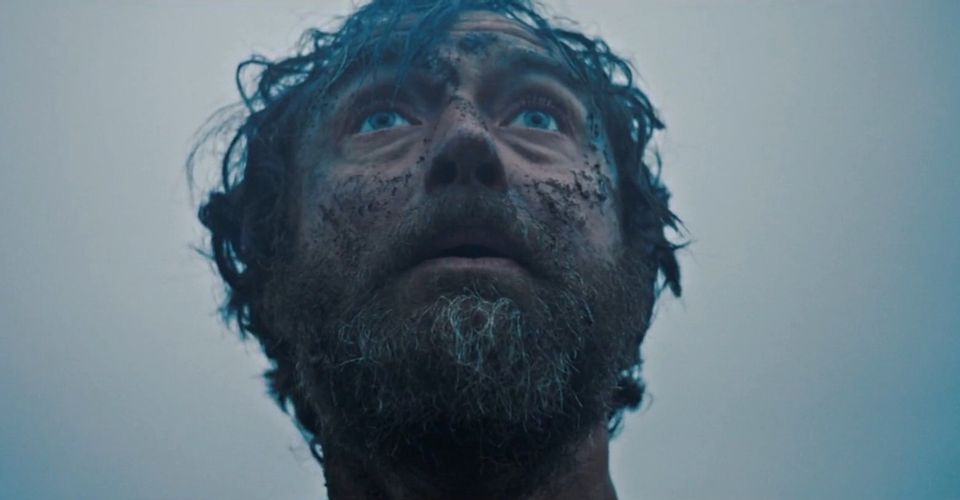THE HANGOVER REPORT – THE THIRD DAY’s immersive, durational appendix turns out to be its show-stopping calling card
- By drediman
- October 30, 2020
- No Comments

This week, I delved into the world of HBO’s The Third Day, the brainchild of Felix Barrett (artistic director of marquee immersive theater company Punchdrunk) and Dennis Kelly (writer of the British television shows Pulling and Utopia). The limited television series is comprised of six traditional episodes, which are broken up into two parts, “Summer” and “Winter”. Additionally, there’s the jaw-dropping interlude “Autumn”, which I’ll discuss further below. Without giving too much away, the first three episodes (“Summer”) tell the story of Sam (played by Jude Law, whose performance is particularly Herculean in “Autumn”), a troubled man recovering from a tragic loss. When he “accidentally” stumbles upon Osea Island — a mysterious island located off the southeast coast of England (FYI, Osea actually does exist) — and its religious, unnervingly secretive inhabitants (two of whom are played with poker-faced magnificence by the wonderful Paddy Considine and Emily Watson), Sam is faced with an existential reckoning that shakes him to the core. “Winter” is set a few months later and is told from the perspective of Helen (portrayed by a tense Naomie Harris), a woman who brings her two daughters to Osea for holiday. Suffice to say, things take a turn for the worse when they find themselves entangled in the creepy politics of the island.
On paper, you may be thinking that the show and its premise, complete with its parade of conventional plot twists, sounds an awful like your typical psychological thriller. To be truthful, in many ways it is. But what distinguishes The Third Day is the astonishing level of detail and care that has gone into creating Osea’s cult-like religion and insular culture. The fictitious religion meshes elements of Catholicism with Celtic paganism, emphasizing the more grotesque and ritualistic aspects of each. Although on the surface, the Oseans’ meek way of life may seem quaint and charming, the show gradually uncovers a dark underbelly of violence and sadism that’s endorsed by the community’s belief system. “Summer” and “Winter” are also stylistically striking in their respective ways, which isn’t surprising given that each segment was helmed by different directors. The former takes on a more saturated and surreal look, which nicely aligns with Sam’s skewed and hazy mental state. The latter episodes, on the other hand, opt for a more muted — even unflattering — visual palette, as befits the exasperated and disillusioned worldview of Helen. It’s fascinating to view Osea through both lenses. And then there’s the hypnotic, relentlessly objective gaze of the mammoth curiosity between these two bookends.
Chronologically wedged between “Summer” and “Winter” is the appropriately titled “Autumn”, an audacious 12-hour hybrid between television and immersive theater. In short, it follows the island’s inhabitants on one of their high holy days, unceremoniously revealing some of their darkly subversive, cult-like rituals along the way. The slow-burning event is conveyed in real time (it was simultaneously filmed and aired live on October 3rd), uninterrupted, and on location, thereby mimicking the sensation of a theatrical happening. Adding to the theatrical nature of the project is the extraordinary fact that “Autumn” was filmed in a single continuous take. The notion of filmic cuts is pretty much nonexistent, encouraging the viewer to create their own derivative narrative and draw their own conclusions. Mr. Barrett essentially utilizes the same recipe – a voyeuristic appeal; a droning, menacing soundtrack – that he perfected in his wildly popular pre-pandemic immersive theater productions (e.g., Sleep No More). In addition, the durational aspect gives viewers ample time to forget about the “fourth wall” and fall headlong into the world so meticulously created by the show’s creators. In my mind, the mesmerizing “Autumn” is the show-stopping centerpiece and primary calling card of The Third Day, even if it was originally intended to be the project’s unorthodox appendix.
HIGHLY RECOMMENDED
THE THIRD DAY
Television / Immersive Theater
Punchdrunk / Plan B Entertainment / Sky Studios

 Copyright © 2025
Copyright © 2025
Leave a Reply